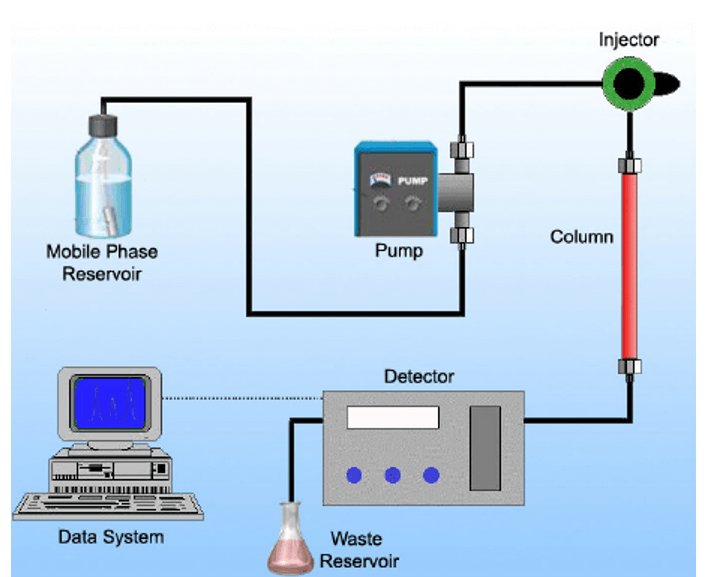The HPLC system mainly consists of an infusion pump, a sampler, a chromatographic column, a detector, and a data recording and processing device. Among them, the infusion pump, the chromatographic column, and the detector are key components. In addition, the gradient elution device, online degasser, autosampler, pre-column or guard column, and column temperature controller can also be configured as required. Modern HPLC instruments have a microcomputer control system for automatic instrument control and data processing. The preparative HPLC instrument is equipped with an automatic fraction collection device.

1. Infusion system
The infusion pump is one of the most important components of the HPLC system. Infusion pumps are classified into constant pressure pumps and constant flow pumps according to the factors of constant output liquid. The performance of the pump directly affects the quality of the entire system and the reliability of the analysis results.
2. Degassing device
Bubbles are often seen in the mobile phase solution due to dissolved oxygen or air mixed in. Bubbles entering the detector can result in sharp noise peaks on the chromatogram. Small bubbles slowly accumulate and become large bubbles. When large bubbles enter the flow path or the chromatographic column, the flow rate of the mobile phase will slow down or the flow rate will become unstable, causing the baseline to fluctuate. It takes time to expel these bubbles once they enter the column. At present, the most commonly used mobile phase degassing devices in liquid chromatography are offline ultrasonic vibration degassing, online inert gas bubbling purge degassing, and online vacuum degassing.
3. Gradient elution device
HPLC has two elution methods, isocratic and gradient. Isocratic elution means that the composition of the mobile phase remains constant during the same analysis cycle, which is suitable for samples with a small number of components and little difference in properties. Gradient elution is a program to control the composition of the mobile phase within an analysis cycle, such as the polarity of the solvent, ionic strength, and pH value. It is used to analyze complex samples with a large number of components and large differences in properties. The use of gradient elution can shorten the analysis time, increase the resolution, improve the peak shape, and increase the detection sensitivity, but it often causes baseline drift and reduces reproducibility.
4. Sampling system
The six-port injection valve or autosampler is frequently used at present. This sampling device is required to have good tightness, small dead volume, and good repeatability to ensure central sampling, and that the pressure and flow rate of the chromatographic system during sampling are small. It is generally used during sample analysis. There are two sampling methods for six-port valve, partial filling method and complete filling method.
5. Separation system
The separation system includes a chromatographic column, a guard column, and a column oven.
6. Detector
The detector is a device that is used to continuously monitor the composition and content changes of the effluent separated by the chromatographic column. It is one of the three key components in an HPLC system. The detector requires high sensitivity, low noise (that is, insensitive to external changes such as temperature and flow), wide linear range, good repeatability, and wide application range.
7. Data processing system
The system can collect, store, display, print, and process test data, so that sample separation, preparation, or identification can be carried out correctly.
Creative Proteomics has extensive experience providing HPLC Analysis Service for sample purification and analysis.






